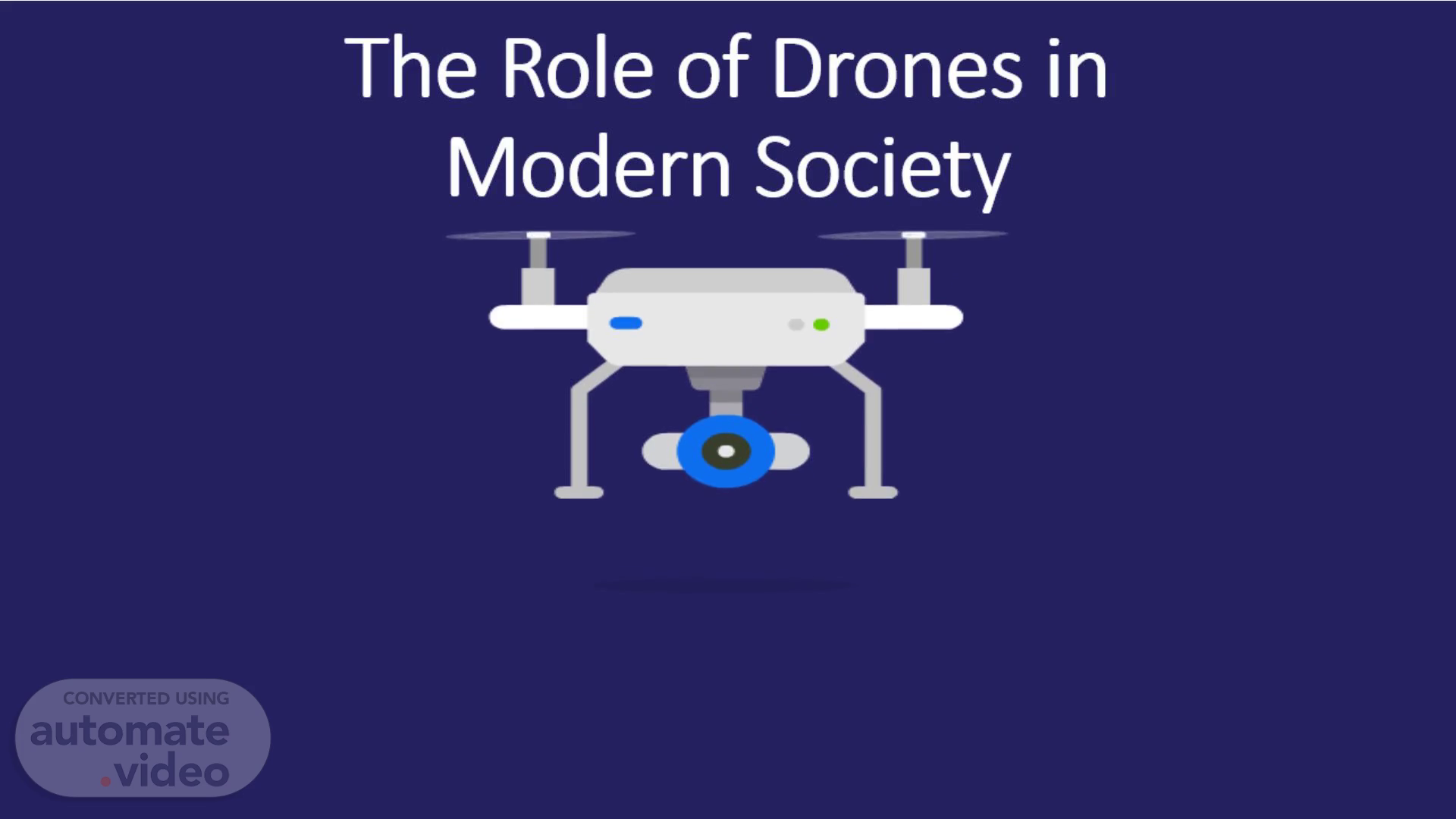
The Role of Drones in Modern Society
Scene 1 (0s)
[Audio] The Role of Drones in Modern Society. A white drone with a camera Description automatically generated.
Scene 2 (8s)
[Audio] What is a Drone? Drones are referred as unmanned aerial vehicles. They are originally developed for the military and aerospace industries. Drones are equipped with different types of sensors, cameras and other technologies depending on their intended purpose. They can come in various shapes and sizes from small consumer drones to large military UAVs.
Scene 3 (38s)
[Audio] What are Drones used for Delivery service – drones are started to get used by some companies they will use this for delivering packages, medical supplies or other goods to remote or difficult to reach locations. These robotic aircrafts can be found rescuing avalanche victims as well as dropping off groceries at your doorstep – and almost everything in between. Aerial photography and videography- drones are widely used for capturing high-quality aerial photos and videos.
Scene 4 (1m 21s)
[Audio] How do drones work? Many parts are involved behind the scenes to support the seamless operation of drones. From delivering commands to ensuring a manageable weight, pilots must take the various factors that make drones suited for specific jobs into account. https://www.youtube.com/watch?v=khI3XgPXIMI.
Scene 5 (1m 49s)
[Audio] Types of drones A drone's autonomy level can range from remotely piloted to advance autonomy, which means it relies on a system of sensors and LiDAR (Light Detection And Ranging) detectors to calculate movement. From delivering commands to ensuring a manageable weight, pilots must take the various factors that make drones suited for specific jobs into account..
Scene 6 (2m 13s)
[Audio] Advanced Autonomous Drones These unmanned aerial vehicles can perform tasks without human intervention. They are also referred to as self-piloted drones These advanced drones rely on a combination of cutting-edge technologies, including sensors, gps, cameras, and sophisticated algorithms to navigate and make decisions in real time..
Scene 7 (2m 37s)
[Audio] Remotely Piloted Drones These drones are controlled remotely by pilots Drone pilots remotely operate these drones for its use in work like surveying, filmmaking , and aerial photography..
Scene 8 (2m 57s)
[Audio] Ground control stations (GCS) These are central control units that allow a drone to fly and an Unmanned aerial system to operate. These stations can sometimes be as large as a desk with multiple views to as small as a handheld controller or even an app. The GCS can be user controlled or be operated via satellite and is capable of controlling flight..
Scene 9 (3m 23s)
[Audio] Challenges that come with drones Weather dependence – drones are very sensitive to weather conditions and adverse , such as high winds, rain or extreme temperature Privacy concerns – drones equipped with cameras raise privacy concerns, as they can capture images and videos of individuals without their consent.
Scene 10 (3m 42s)
[Audio] Benefits of drones Drones provide cost-effective and efficient solutions for tasks such as surveillance, search and rescue, and infrastructure inspection. Their versatility enhances data collection, monitoring, and delivery capabilities across various industries, leading to increased productivity and improved safety..
Scene 11 (4m 4s)
[Audio] Law for flying drones Drones can and do present a hazard to manned aircrafts. Drones are subject to the law through the air navigation order If a drone is used irresponsibly the user can be prosecuted. Drones are not allowed to be flown near an airport or an aircraft. Drones will need to be flown at a distance below 400ft. Images taken by drones should not break the privacy laws..
Scene 12 (4m 33s)
[Audio] Overall summary The context of a drone and what it is used for – page 2-4 Certain type of drones – page 5 - 8 Benefits and challenges – page 9-10 Laws – page 11.